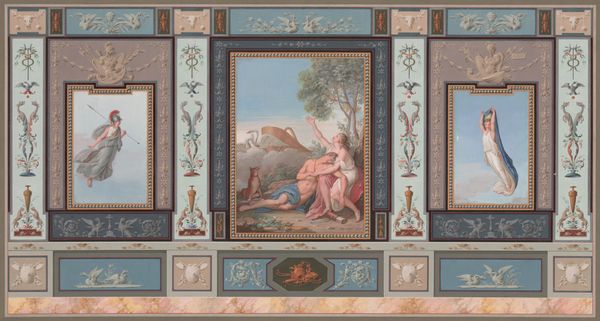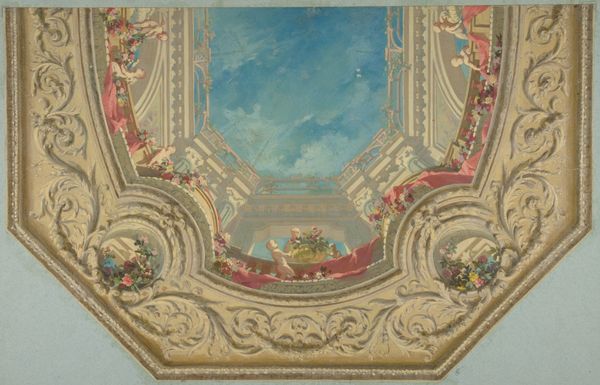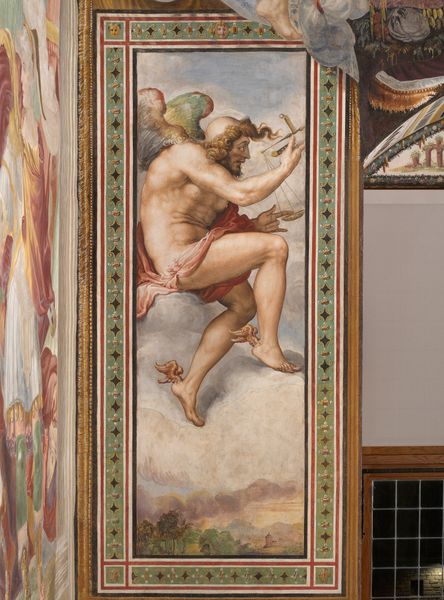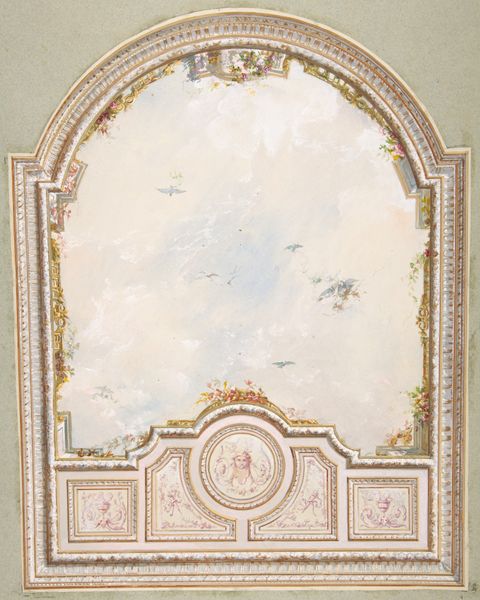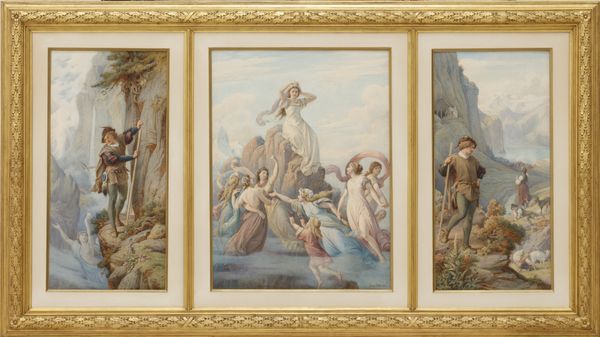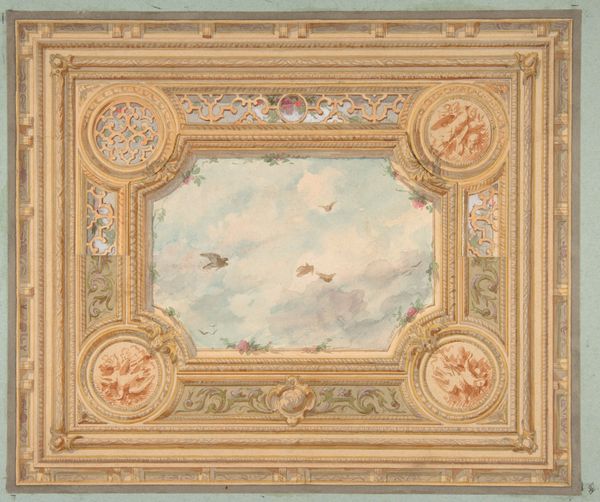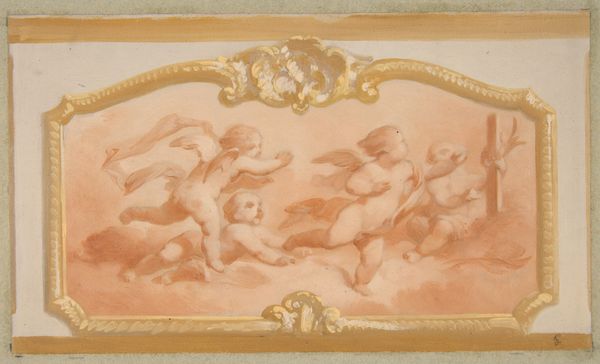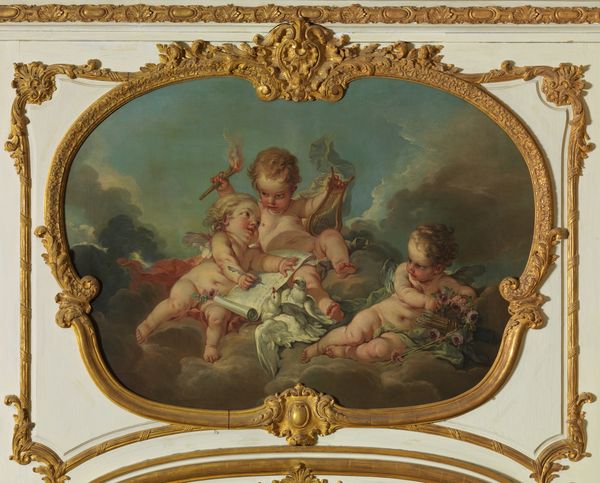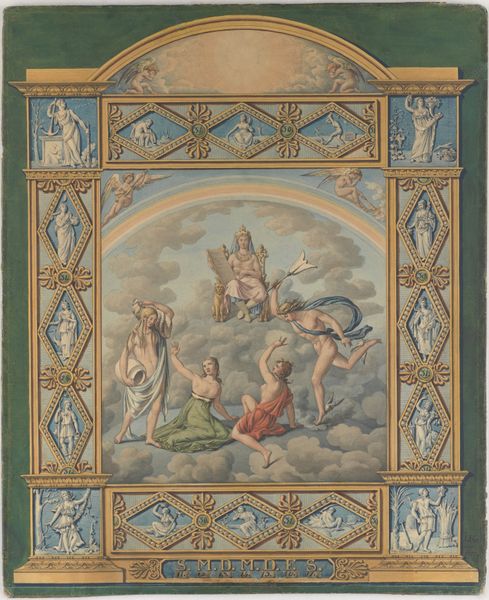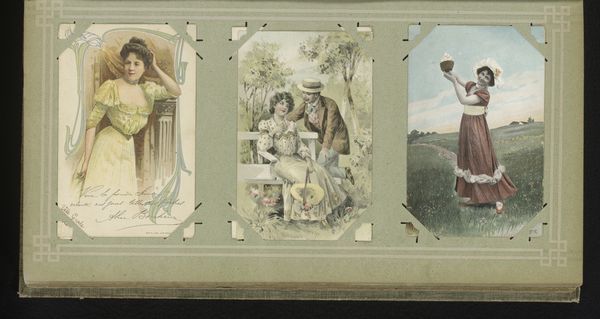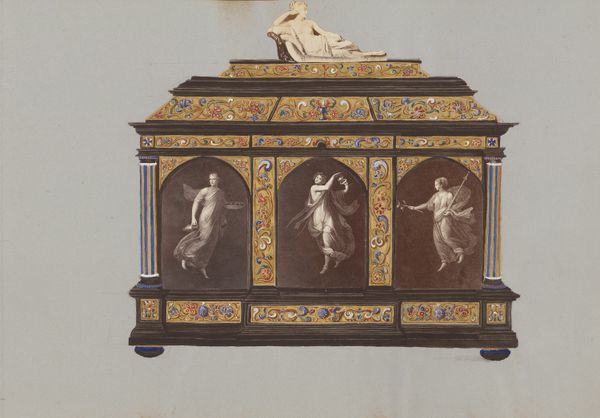
drawing, tempera, painting, fresco, mural
#
portrait
#
drawing
#
neoclacissism
#
allegory
#
tempera
#
painting
#
greek-and-roman-art
#
landscape
#
figuration
#
fresco
#
romanticism
#
history-painting
#
academic-art
#
decorative-art
#
mural
Dimensions: sheet: 30.2 × 53 cm (11 7/8 × 20 7/8 in.)
Copyright: National Gallery of Art: CC0 1.0
Curator: It strikes me how this mural's pale colors create a surprisingly calming effect, even though it is rich in details. Editor: Indeed. This is an "Elaborate Wall Decoration with Endymion and Hebe," attributed to Tommaso Bigatti around 1800. Its execution involves tempera, fresco, and drawing. What initially draws my attention is the composition—a central rectangular panel flanked by two ovals. Curator: I'm interested in those figures within the ovals—Endymion, eternally asleep, watched over by Selene, the moon goddess, in one. And Hebe, goddess of youth, on the other. The mural's not just decorative; it’s steeped in classical narratives. I would assume it’s made for a wealthy patron that would probably enjoy an idealized image of youth and eternal life. The symmetry suggests perhaps a commission for a member of the bourgeoise trying to assert themself. Editor: Observe how Bigatti employs color. Notice how the central panel uses brighter pastels—almost Rococo in spirit—that gives off a sense of hope. It draws the eye inward, creating a focal point amidst the more somber, mythical scenes. There is certainly balance at play in the organization of each individual composition, too. Curator: The overall neoclassical aesthetic is very telling about the artwork's era. There’s a clear return to the values and the aesthetics of ancient Greece and Rome. The mural's emphasis on themes of mythology reflects this obsession with classical ideals. Editor: Let us look into those neoclassical design. They follow clear vertical and horizontal lines that give it harmony. And that decorative band along the top— it seems like a continuous frieze— adds a grounding structural element. Curator: Yes, all these visual elements definitely give off harmony, and an era defined by its interest in logic. And perhaps we should remember, too, that this period had social upheaval due to political revolution. And of course, in paintings like these, sometimes these narratives about myths were used to allude to something happening in the real world that the artists or patrons had to veil in symbolic form. Editor: Interesting point! For me, stepping back from potential symbolic interpretations, it brings me back to simply acknowledging its balance and delicate use of space. It offers a quiet moment of contemplation in neoclassical form. Curator: Perhaps after our discussion, others may recognize new links to that moment in history when a revolutionary spirit, and a passion for history and visual logic, met together in artwork such as this.
Comments
No comments
Be the first to comment and join the conversation on the ultimate creative platform.
